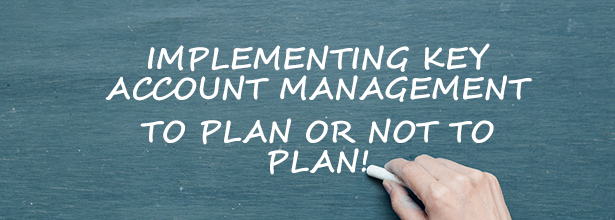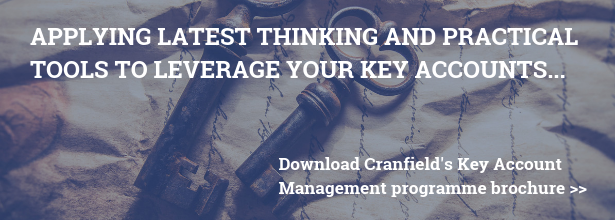
Ask organisations to list the essential ingredients of a Key Account implementation and Key Account Plans will always feature on the list as an imperative part of Key Account Management (KAM).
Yet this is something that is consistently implemented badly by many organisations, who fail to capitalise on the advantages that having strategic, forward focused and customer centric KAM plans can bring. Why is this? Our experience has identified ten common pitfalls that can cause key account planning to fail:
- The key account plan is seen as belonging to the key account manager
- The key account manager does the plan on their own
- Senior management show no interest in the plans
- The plans are done once and never looked at again
- The plans are too short term and transactional
- The plans are not regularly reviewed or updated
- The plans are all about the supplier with little demonstration of customer understanding
- The key account manager keeps the plan ‘close to their chest; and doesn’t share it
- The planning process is seen as a box filling exercise
- In the worst-case scenario, nobody owns it!
However, we could ask the question, is it worth implementing KAM plans at all? Well, as the late great Sir John Harvey Jones said:
“Planning is an unnatural process; it is much more fun to do something. And the nicest thing about not planning is that failure comes as a complete surprise rather than being preceded by a period of worry and depression”.
So NOT planning could have some advantages. But in fact, our experience does show that those companies who execute account planning well, and keep their plans ‘live’ and current, have a more successful implementation of KAM and more tangible business benefits including gaining competitive advantage with their key accounts and creating value for them. So how do you go about building a best practice KAM planning process and best practice Key Account Plans. Well, there are some common questions that we are asked about implementing KAM planning and here are some examples:
- How should a best practice Key Account Plan be structured?
- What types of information should be included in a typical Key Account Plan
- What time period should the Key Account Plan typically cover?
- Who should the Key Account Manager involve in the planning process?
- Should the customer be involved in the planning process?
- Should senior management be involved in the planning process?
- How often should the Key Account Plan be reviewed?
- Who should review the Key Account Plan?
- How does the Key Account Manager get buy-in to the Key Account Plan from other parts of the organisation?
- How does the Key Account Manager keep the Key Account Plan ‘alive’?
We have worked with many organisations over the years on key account planning and have created a best practice approach which we call Value Planning. This puts the customer at the start and heart of the planning process and our toolkit takes you on a journey to building a best practice plan.
Our work in this area is critical to achieving successful key account management programs for organisations looking to succeed at managing key account customers. For the past twenty years, Cranfield has pioneered the development of Key Account Management research in Europe. Working with world leading businesses to adopt new frameworks to fully leverage key relationships and strategies. This new frontier knowledge is continually integrated into our Key Account Management Programme.
Blog produced by: Dr. Sue Holt, visiting academic and programme director on Cranfield School of Management Key Account Management Programme. Also facilitates on the KAM Best Practice Research Club.
Read more:




